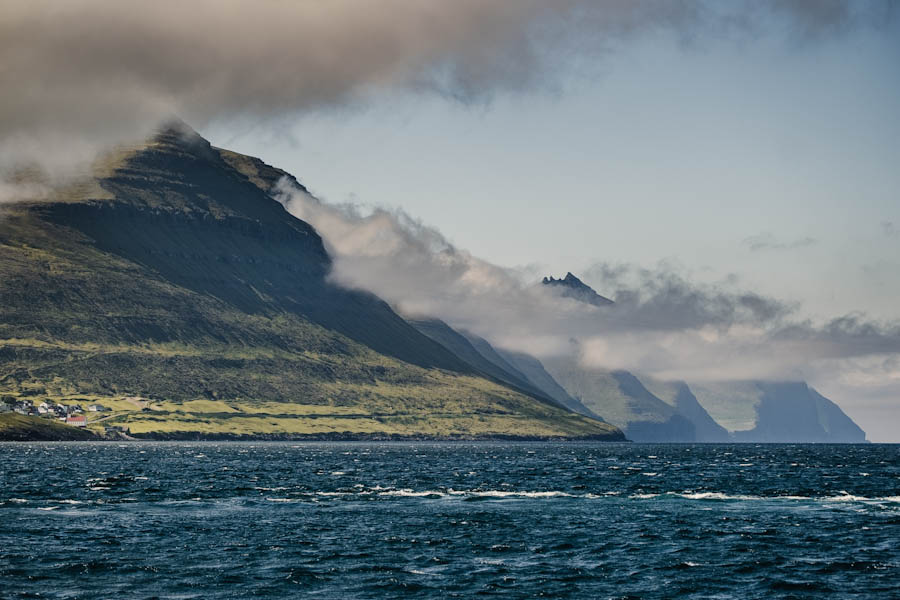In Scandinavian countries, many old folk tales have been passed down through generations. These stories, known as sagas, often feature mysterious creatures and haunting legends. The Seal Woman of Mikladalur is one such saga; alongside the legend of Rasmus, a well-known tale on the Faroese island of Kalsoy. In 2014, a 2.6-metre-tall bronze statue of Kópakonan (The Seal Woman) was placed in the village of Mikladalur, as a tribute to the legend. If you find yourself exploring Kalsoy, be sure to stop by this powerful sculpture and take time to discover the other beautiful spots in and around Mikladalur.
The saga of Kópakonan, The Seal Woman
The story goes that people who have passed away live on as seals in the sea. Once a year, on Twelfth Night, the seals come ashore, shedding their skins and appearing in human form. They spend the night singing, dancing and celebrating on land. As soon as the sun rises, they slip back into their seal skins and return to the sea.
A young farmer from Mikladalur wanted to see for himself whether the legend was true. On Twelfth Night, he hid behind some rocks near the beach and waited. Sure enough, groups of seals came ashore, shedding their skins and revealing their human forms. Among them was a beautiful seal girl who placed her skin on a rock close to where the farmer was hiding. While she wasn’t looking, he grabbed her skin and kept it with him. He spent the night watching the seal people dance and sing, his eyes fixed on the girl. But as dawn broke and everyone began putting their seal skins back on, she couldn’t find hers. And without it, she was unable to return to the sea.
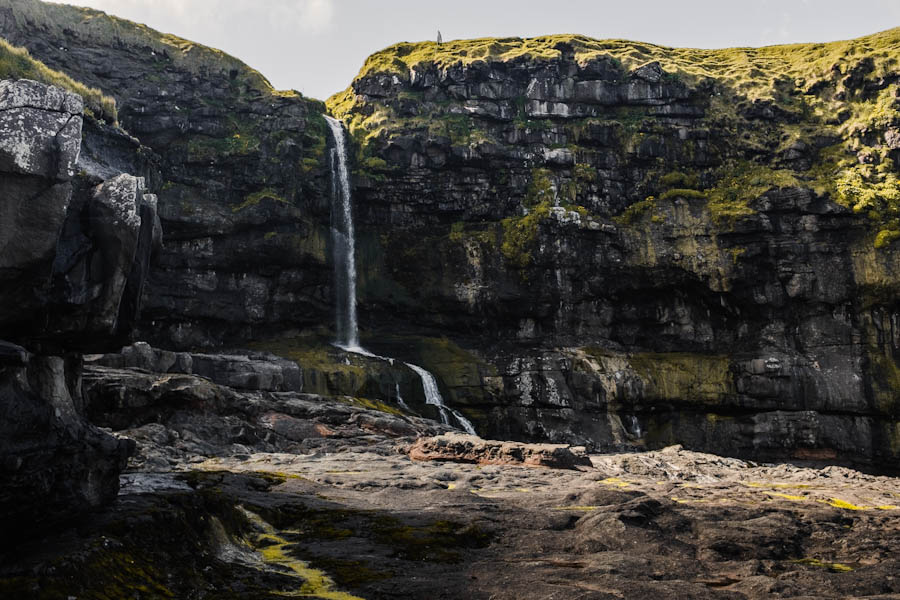
The seal girl was devastated. She could smell her skin nearby, but no matter how hard she searched, she couldn’t find it. Eventually, the young farmer stepped out of his hiding place with the skin in his hands. She pleaded with him to give it back, but he refused. Instead, he took her to his farm and locked the skin away in a chest. He always kept the key close to him, making sure she could never get hold of it.
The girl was forced to stay with him. Over the years, she became his wife and together they had several children. But although she lived among humans, her heart always belonged to the sea.
One day, while the farmer was out fishing with his friends, he suddenly realised with a shock that he had forgotten the key at home. He was certain she would find the skin and return to the sea. “Today I will lose my wife!” he cried again and again to his companions. The men rowed back to shore as quickly as they could.
When they reached the farm, only the children were there. Their mother was gone. The fire in the hearth had gone out and all the knives had been removed; she had made sure her children wouldn’t hurt themselves in her absence. The chest was open. Empty. Her seal skin was gone. She had put it on and disappeared into the sea, where a male seal had been waiting patiently for her all those years.
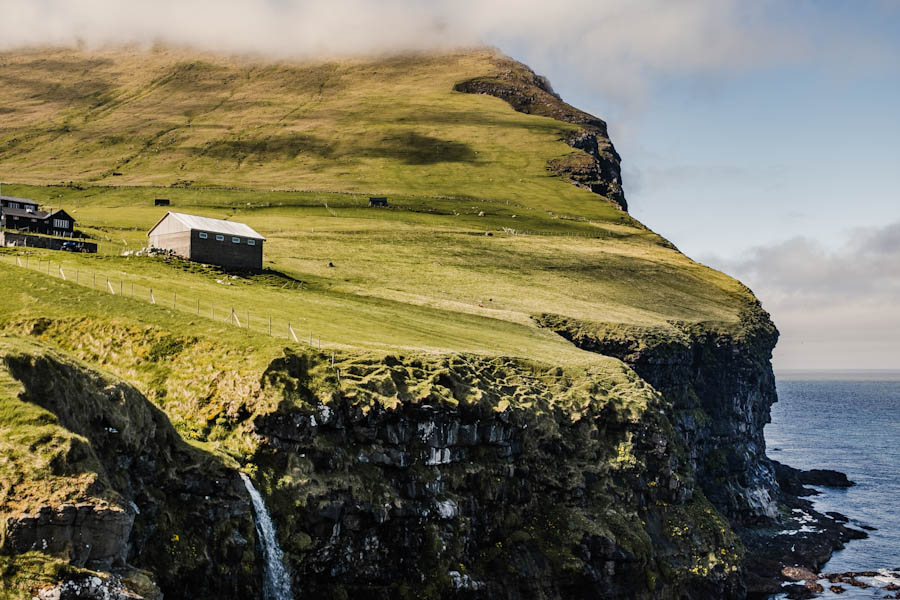
Every time her children went down to the beach in the years that followed, a seal would appear in the waves, silently watching them. The people of the village believed it was their mother, keeping an eye on her children from the sea. As time passed, she never returned.
One day, the men of Mikladalur planned a seal hunt in a nearby sea cave. The night before the hunt, the Seal Woman appeared in the farmer’s dream. She warned him not to kill the large male seal that would be lying at the cave’s entrance, he was her husband. And deeper inside, two small seals would be resting: her sons. She described their markings in detail so he wouldn’t mistake them.
But the man ignored her plea. He joined the others in the hunt and together they slaughtered every seal they could find. When they returned to the farm and divided the catch, the farmer received the large male seal and the front and rear flippers of the two pups.
That evening, the head of the large seal and the flippers of the young ones were prepared for dinner. Suddenly, a loud thud shook the house, followed by a flash of light. The Seal Woman appeared before them and spoke a curse:
Here lie the head of my husband with his broad nostrils, the hand of Hárek and the foot of Fredrik! Now there shall be revenge, revenge on the men of Mikladalur and some will die at sea and others fall from the mountain tops, until there be as many dead as can link hands all round the shores of the isle of Kalsoy!
With a loud crash, she vanished and after that, she was never seen again. Even today, it is said that men from Mikladalur sometimes fall from cliffs or drown in the sea. The people of the Faroe Islands believe that there have not yet been enough victims to form a human “chain” around Kalsoy.
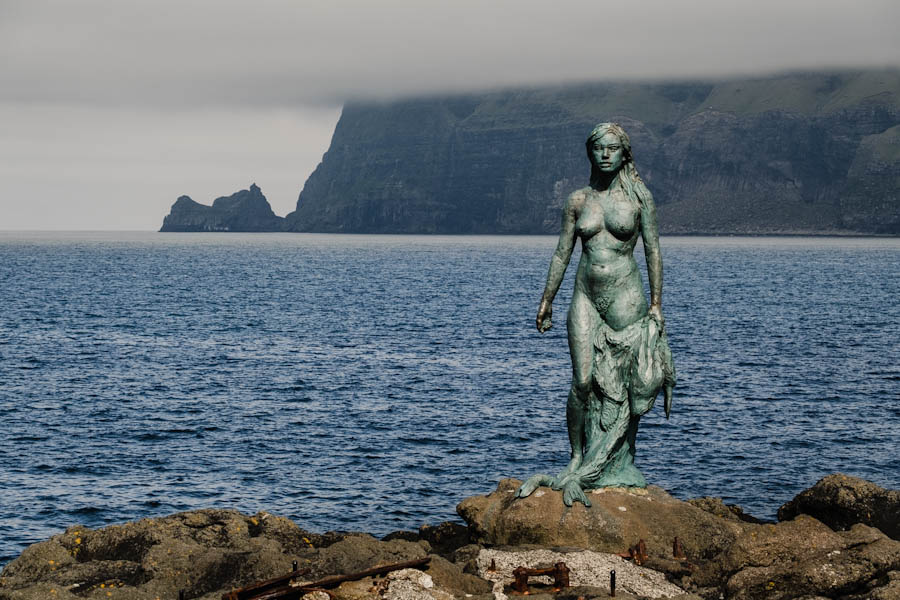
Eating waffles at Café Eðge
After visiting Kópakonan, it’s time to let this touching saga sink in. If you ask me, it’s quite an emotional legend. To recover, head to Café Eðge, also known as Café on the Edge. Here, you can enjoy delicious waffles while taking in the breathtaking view of the western island of Kunoy. The warm waffles are served in heart shapes and you can top them with delightful jam and cottage cheese.

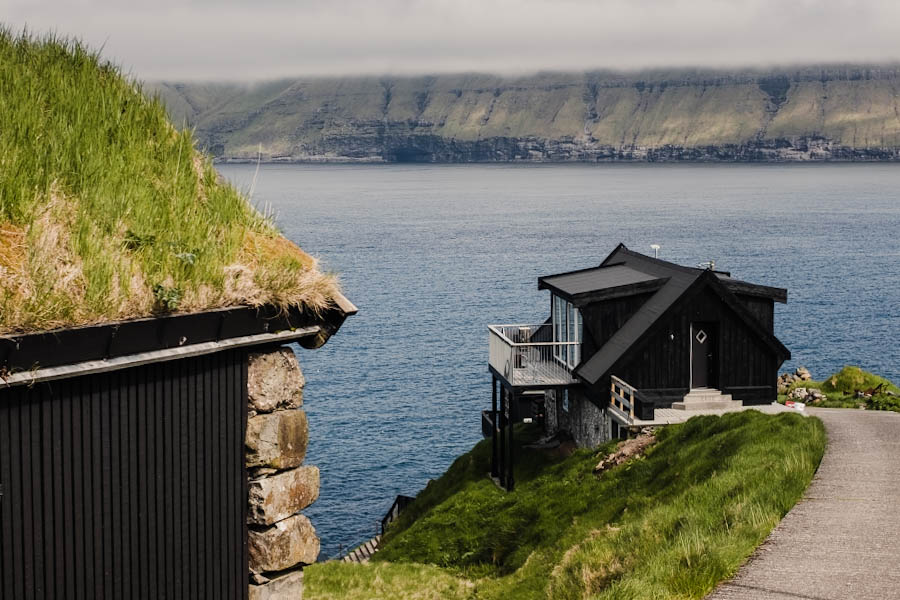
Wandering around Mikladalur
There isn’t much to do in Mikladalur. The village has about 34 inhabitants and it’s very quiet (especially in the spring). Kópakonan is the main attraction in Mikladalur, but it’s definitely worth taking a leisurely stroll through the village. The views are phenomenal. On this side of Kalsoy, you can see the island of Kunoy. A lot of the time, there’s a blanket of clouds above the island, which looks almost magical, especially with the thatched houses in the foreground.
It wasn’t until the 1980s that all the villages on Kalsoy became accessible by car. The first tunnel was built in 1979, with the second and third tunnels following in 1980. The last two tunnels were completed in 1985, allowing even the most remote village, Trøllanes, to be reached by car. For the residents of Kalsoy’s villages, the tunnels marked the end of an era when all distances between villages had to be covered on foot, over high mountain ridges and along dangerously steep cliffs.
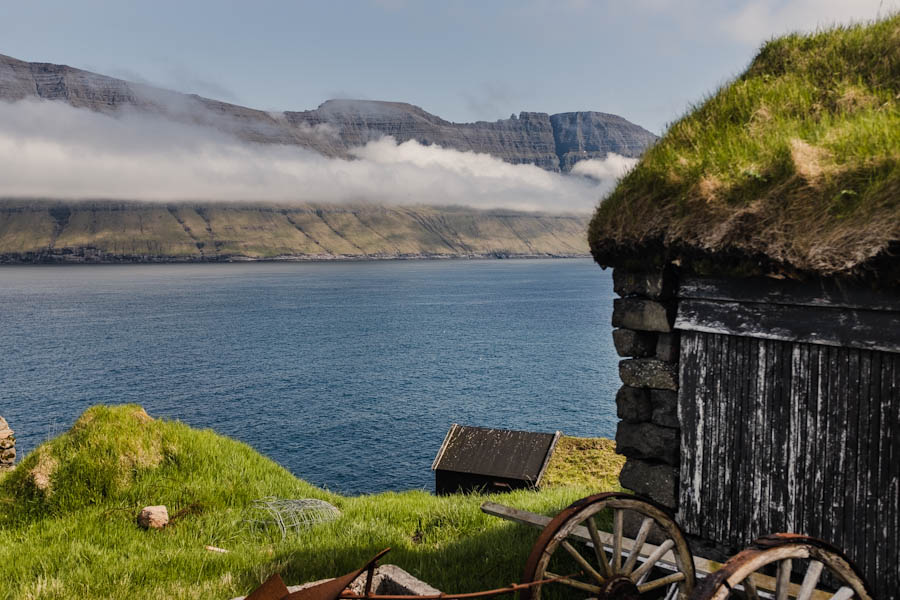
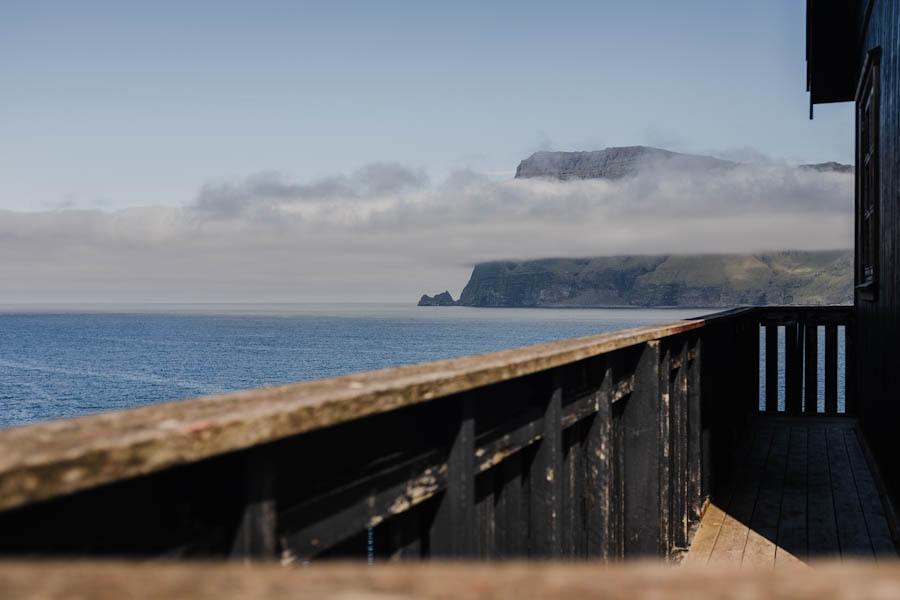
How to get to Kalsoy
The ferry to Syðradalur on Kalsoy departs from Klaksvík on the island of Borðoy. You can take your own car to Kalsoy, but only 12 cars can fit on the ferry and locals get priority. It’s not possible to book a ticket for your car in advance, so it’s very much a matter of luck. With a bit of bad luck, you might have to wait for quite a while before you can board. A more convenient option is to go on foot. Once you arrive in Syðradalur, you can take the public bus to your destination. There is only one road on Kalsoy, so this is the easiest way to travel. Check this website for ferry departure times to Kalsoy.
How to get to the Faroe Islands
You can reach the Faroe Islands by ferry from Denmark or by plane, with a layover in Copenhagen or Billund. The ferry departs from Hirtshals (Denmark) to the Faroe Islands. The journey takes around 36 hours, so you’ll spend two nights on the boat. The ferry arrives in Tórshavn early in the morning. If you want to fly to the Faroe Islands, check options on sites like Trip.com. If you’re taking the ferry, you can fly to Denmark (Aalborg is the most convenient) and then take the train to Hirtshals to board the ferry. If you want to bring your own car, you can drive it to Hirtshals and take it with you on the ferry.
If you’d rather fly to the Faroe Islands and drive around with a rental car, make sure to choose a rental company that offers comprehensive insurance coverage. This ensures that you’re fully protected, even if you cause damage yourself. A good insurance policy will provide peace of mind on the road, so you can enjoy your trip without worrying about unexpected costs.
